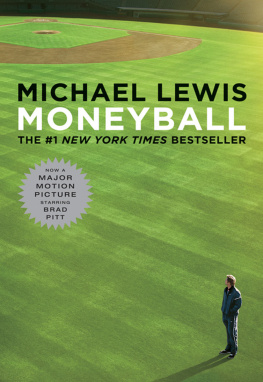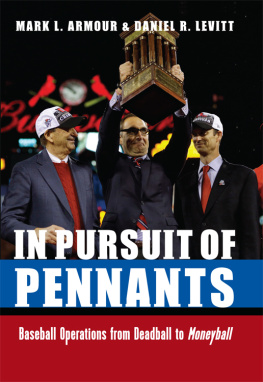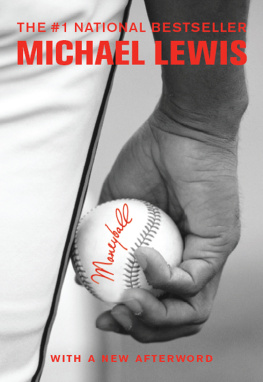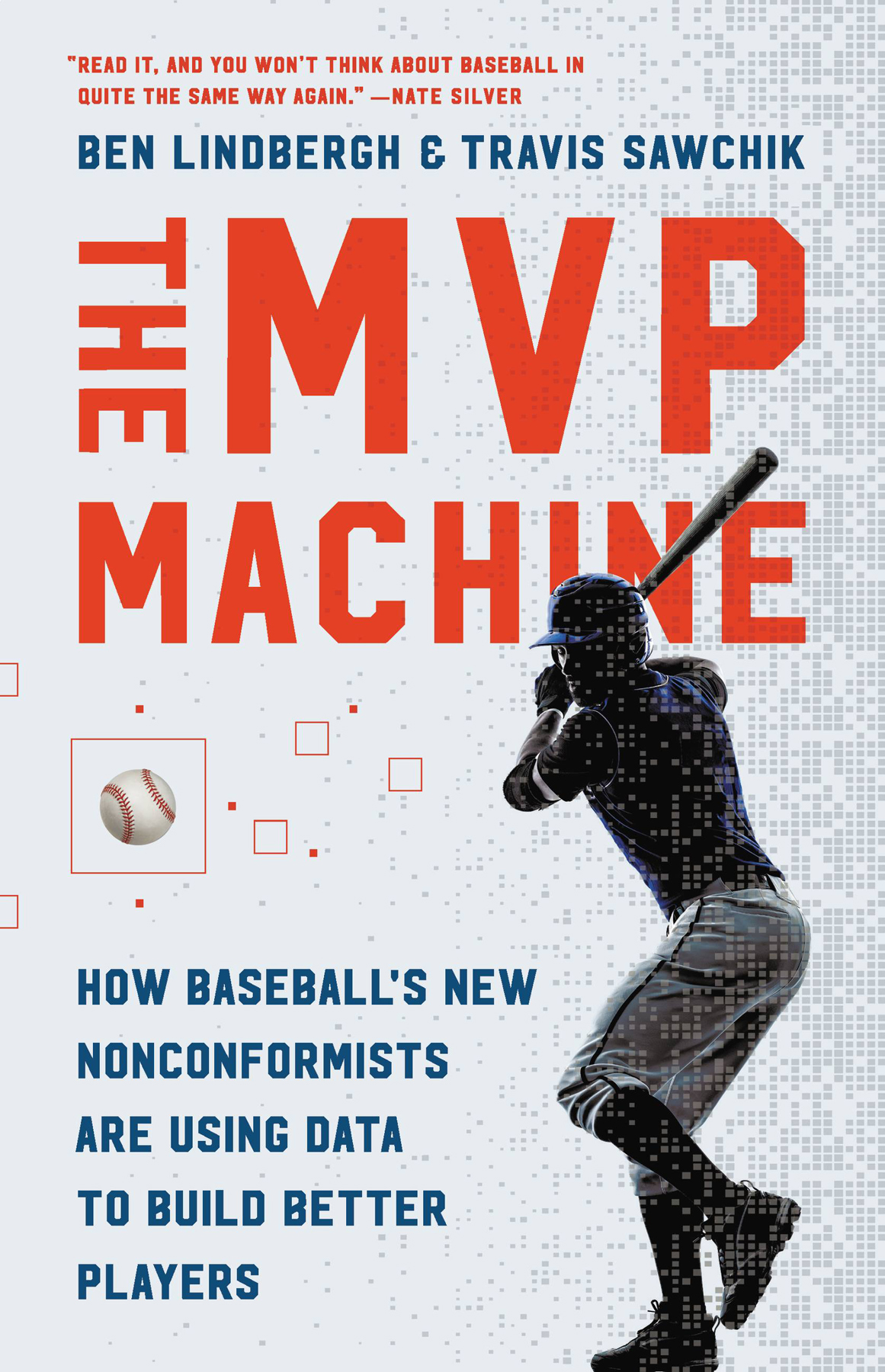Copyright 2019 by Travis Sawchik and Ben Lindbergh
Cover design by Ann Kirchner
Cover image Iasha/Shutterstock.com; Ostill/Shutterstock.com; SkillUp/Shutterstock.com
Cover copyright 2019 Hachette Book Group, Inc.
Hachette Book Group supports the right to free expression and the value of copyright.
The purpose of copyright is to encourage writers and artists to produce the creative works that enrich our culture.
The scanning, uploading, and distribution of this book without permission is a theft of the authors intellectual property. If you would like permission to use material from the book (other than for review purposes), please contact permissions@hbgusa.com . Thank you for your support of the authors rights.
Basic Books
Hachette Book Group
1290 Avenue of the Americas, New York, NY 10104
www.basicbooks.com
First Edition: June 2019
Published by Basic Books, an imprint of Perseus Books, LLC, a subsidiary of Hachette Book Group, Inc. The Basic Books name and logo is a trademark of the Hachette Book Group.
The Hachette Speakers Bureau provides a wide range of authors for speaking events. To find out more, go to www.hachettespeakersbureau.com or call (866) 376-6591.
The publisher is not responsible for websites (or their content) that are not owned by the publisher.
Editorial production by Christine Marra, Marrathon Production Services. www.marrathoneditorial.org
Library of Congress Control Number: 2019934700
ISBN 978-1-5416-9894-9 (hardcover), ISBN 978-1-5416-9895-6 (ebook)
E3-20190511-JV-NF-ORI
Travis Sawchik and Ben Lindbergh brilliantly capture the next frontier of major-league teams evolve or die mindset: the league-wide movement of using data, technology, and science to revolutionize the way players are developed. Baseball has seen a rapid influx of high-curiosity, growth-mindset players and coaches, creating the perfect environment for innovation and rethinking convention. The MVP Machine provides tremendous insight into baseballs latest transformation.
Billy Eppler, General Manager, Los Angeles Angels
The MVP Machine isnt just the purest distillation yet of baseballs information era and how it came to be. Its a seminal road map for the game today and treasure map to findand understandthe gems baseball soon will offer.
Jeff Passan, MLB insider, ESPN
As the game of baseball, and more specifically the teaching methods within, continue to evolve, The MVP Machine paints a real-time portrait of player development. Players and coaches are in a constant search for advantages that will push their personal limits on the field in order to maximize their abilities. Ben and Travis provide fascinating details of how individual players pushed the boundaries of innovative coaching, self-reflection, and a willingness to make even the smallest of adjustments in order to reach new heights as players. This book is a very accurate portrayal of modern-day player development and the ongoing pursuit of individual greatness.
Mike Hazen, Executive Vice President and General Manager, Arizona Diamondbacks
A lot of books have claimed to be Moneyball 2.0, but this book actually delivers. It chronicles the changes that are transforming the game of baseball at a fundamental level and shifting power back into the hands of players and coaches.
Mike Fast, Special Assistant to the General Manager, Atlanta Braves and former Director of Research and Development, Houston Astros
High-speed cameras and radar-tracking devices have revolutionized training and are now giving baseball players accurate, detailed, and actionable feedback during practice. This captivating book details step-by-step how merely good major-league players have recently been able to transform themselves into great ones and reach previously unattainable levels of mastery by purposeful and deliberate practice.
K. Anders Ericsson, Conradi Eminent Scholar of Psychology, Florida State University, and author of Peak: Secrets from the New Science of Expertise
Travis Sawchik and Ben Lindbergh are always at the forefront of the analytics revolution. The MVP Machine brings us the newly emerging competitive advantage whereby players are joining the intellectual advancement of the game and utilizing the new tools available to build a better major-league player. Make no mistake, this is how games, divisions, and World Series titles are now being won.
Brian Kenny, MLB Network
Big Data Baseball: Math, Miracles, and the End of a 20-Year Losing Streak
ALSO BY BEN LINDBERGH
The Only Rule Is It Has to Work: Our Wild Experiment Building a New Kind of Baseball Team
TO MY PARENTS, FOR MAKING ME A PROSPECT
BEN LINDBERGH
FOR ALL THOSE WHO DIDNT MAKE THE CUT
TRAVIS SAWCHIK
The only way of discovering the limits of the possible is to venture a little way past them into the impossible. Any sufficiently advanced technology is indistinguishable from magic.
ARTHUR C. CLARKE, HAZARDS OF PROPHECY
Trevor Bauer steps onto a makeshift pitching mound at Driveline Baseball in Kent, Washington, a suburb south of Seattle. The throwing platform consists of a pair of black, rubberized weight-room mats covering a sloped plywood structure that mimics the shape and height of an actual mound. Its January 3, 2018, three months before Opening Day.
The Driveline campus, where inquisitive and often desperate ballplayer pilgrims gather to get better, consists of three buildings strewn about a drab industrial park that also serves as the site of a sewage disposal service, a glassblowing business, and a hydraulics company. Drivelines R&D building, where Bauer spends much of his offseason, is a warehouse of a place, carpeted wall-to-wall with Kelly-green artificial turf. The main entrance is a roll-up garage door, usually left open to a vista of neighboring business units beige, vertically corrugated metal facades and an asphalt parking lot where a collection of modest cars rests. Opposite the door and along the far wall of the facility, occupying nearly the entire length of it, is the bullpen-like pitching area where Bauer is to begin throwing. The home plate hes aiming for has a backdrop of black nylon netting to protect the nearby employees and desktop computers from ricochets.
At the front of the mound is a wooden board, to which cling three small tracking devices used for biomechanical evaluations. Sawdust from the recently assembled, jury-rigged contraption has spilled onto the front of the mound. So much at Driveline is improvised because what was needed was either nonexistent or cost prohibitive. But this unpolished place has become Bauers lab. Every off-season he tries to get better at something, focusing his efforts on gaining a new skill. His goal this winter is to create a much-needed additional pitch.
In his first three full seasons with the Cleveland Indians, 20142016, the right-hander was a roughly league-average starter, a useful player but far from the star he thought he could be. Then, at the end of May 2017, Bauer regressed. Hitters started crushing his fastball, giving him the worst earned run average in the majors (6.00) among qualified starters. There were calls for him to be sent to the Cleveland bullpen. His postgame press conferences grew testier and shorter; after one mid-May start, he ripped off and slammed down the television mic attached to his undershirt. Thanks to an increased reliance on his best pitch, a curveball, and greater use of his slider-like cutter, he was able to turn his season around and posted a strong second half. But he knew he could not be successful long term with the curve as his lone elite pitch, and the cutter variant he was throwing was uncomfortable and hard to command.









